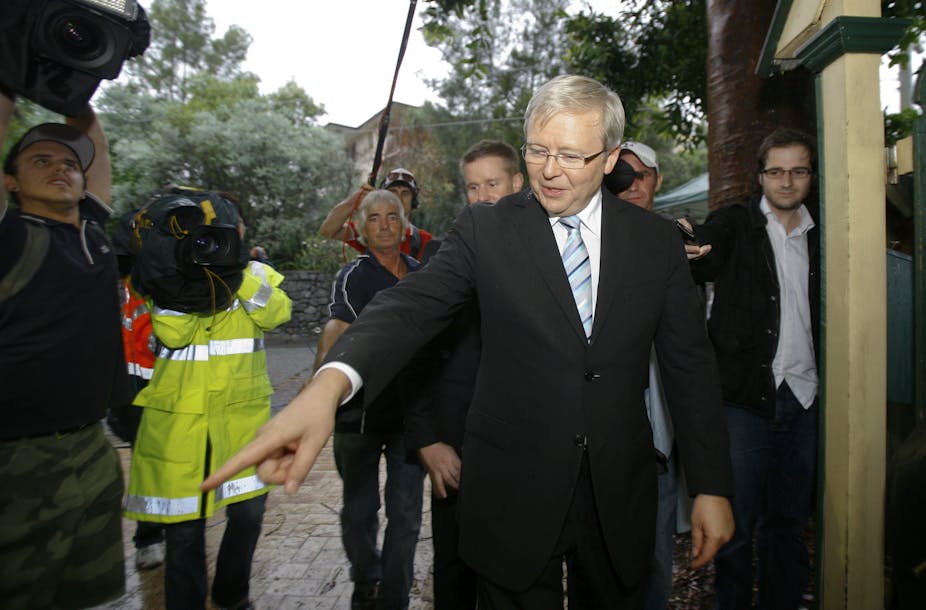At 10am today, the Labor caucus will meet to settle the leadership battle between Julia Gillard and Kevin Rudd. But how does the leadership selection process actually work?
While the contest between Gillard and Rudd has been played out over the last few days in an overwhelmingly public fashion, the actual mechanics of the leadership selection are by contrast, very private.
The procedures for the election of the party leader are contained in the Federal Parliamentary Labor Party Rules – a document that is not publicly available.
However, from the information that has made it to the public arena we are able to piece together an accurate picture of how the process works.
The numbers
Leadership elections take place in a special meeting of the parliamentary caucus. Following a motion to declare the leadership of the party vacant, candidates put themselves forward to the party room.
Although they do not require a mover or a seconder, it is common for potential candidates to “do the numbers” and campaign amongst their parliamentary colleagues before the vote to ensure that they have the requisite level of support before formally placing their hat in the ring.
Once the nominations have been received, voting takes place in a secret ballot in which all federal MPs (both the House of Representatives and Senate) are entitled to vote. The electoral system used is preferential and parliamentarians must be present to vote. In the event of a tie between two candidates, the name of the winner is pulled from a hat.
A system of our own
Australian political parties are actually quite unusual in that it is the parliamentary party that exclusively selects the party leader. Political parties in the UK, Ireland and Canada have moved away from this model and now incorporate different groups in the selection process, such as party members, unions, affiliated groups, and the party conference.
For example, the UK Labour Party’s leader is elected in a ballot with the votes split in thirds between MPs, rank-and-file party members and affiliated unions. At the party’s September 2011 conference it was even suggested the model be changed to incorporate a percentage of votes from registered Labour supporters in the broader electorate.
The leadership selection system that we currently have in Australia is justified as being both flexible and efficient, which is important given the relatively short time-frame of our electoral cycle (at most three years).
A mandate from the party or the people?
In governing parties, the leader also must serve as the prime minister and is therefore constitutionally responsible to the lower house of the Parliament. For that reason, and because it is in large part also a managerial role, the parliamentary party is deemed the most suitable group to the select the leader.

In terms of the current debate, we’ve seen this play out in the characterisation of Kevin Rudd’s previous leadership style as chaotic, difficult and poll-driven and in the point repeatedly raised that MPs must be able to work with their party leader.
The other side of this argument, made by Rudd and his supporters, is that while the current selection process might produce a party leader and a PM who has the support of the parliamentary party, he or she may not share that same level of support either within the wider party or with the Australian public.
Change in the air?
While the ALP can’t know this for certain without actually going to an election, the situation is more problematic in Gillard’s case with continued public resentment over the manner in which she was installed as party leader in the “coup” of 2010.
Given that Rudd does not appear to have the numbers within the caucus to win the current leadership contest, a selection process that incorporates the broader party would definitely benefit the Rudd campaign. Interestingly, just before the ALP National Conference in December last year, Rudd actually called for reform of the Labor leadership selection process so that rank-and-file members would have a greater say in choosing the parliamentary leader.
Regardless of who emerges as the victor in the Gillard-Rudd leadership stoush, the broader debate on reforming the leadership selection process in the ALP is just about to begin.

